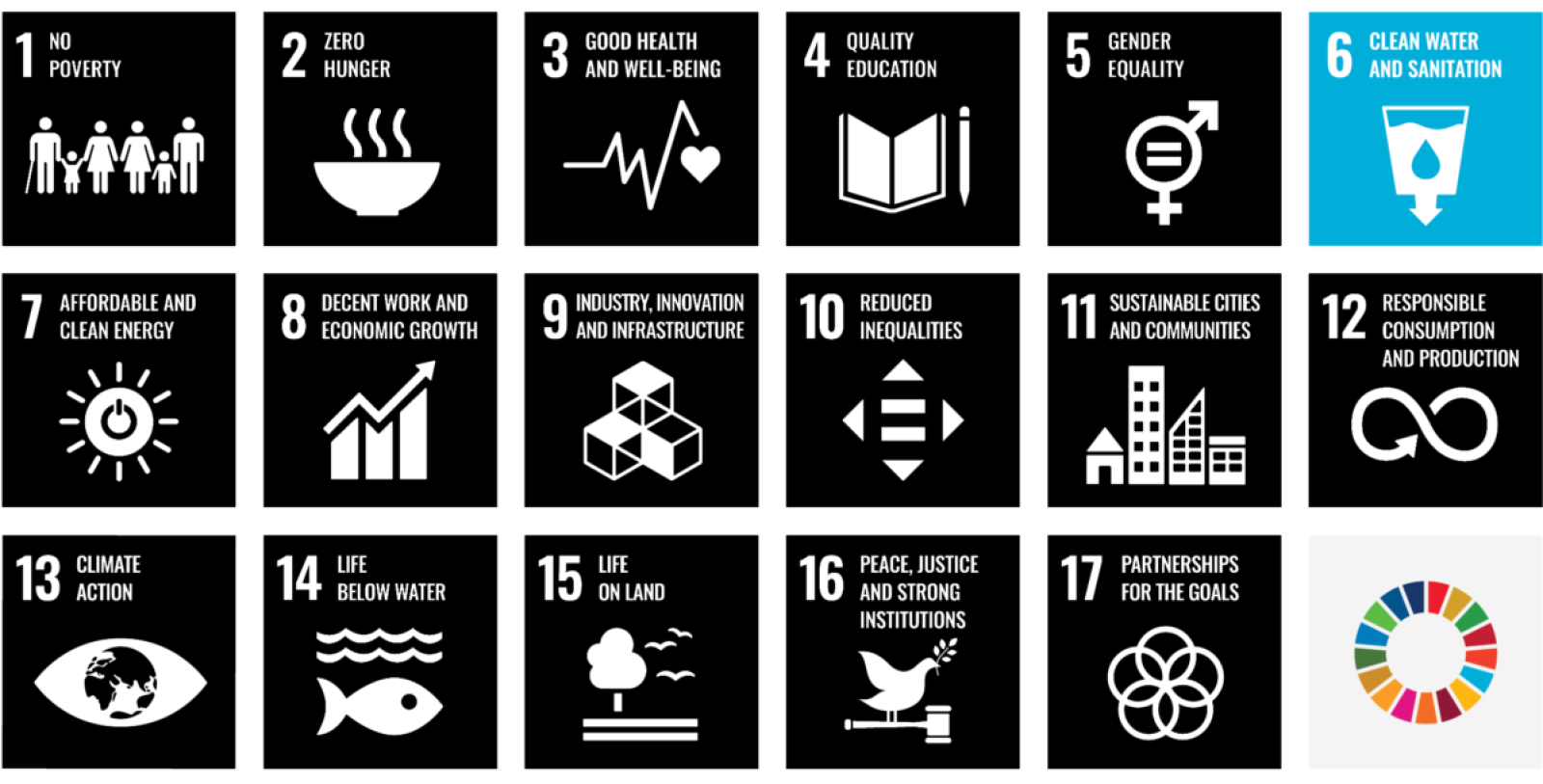SDG6: Facts & Figures

-
2.3 billion people live in water-stressed countries, of which 733 million live in high and critically water-stressed countries. (UN-Water, 2021)
-
3.2 billion people live in agricultural areas with high to very high water shortages or scarcity, of whom 1.2 billion people – roughly one-sixth of the world’s population – live in severely water-constrained agricultural areas. (FAO, 2020)
-
Today, 1.42 billion people – including 450 million children – live in areas of high or extremely high water vulnerability. (UNICEF, 2021)
-
About 4 billion people, representing nearly two-thirds of the global population, experience severe water scarcity during at least one month of the year. (Mekonnen and Hoekstra, 2016)
-
72% of all water withdrawals are used by agriculture, 16% by municipalities for households and services, and 12% by industries. (UN-Water, 2021)
-
When a territory withdraws 25% or more of its renewable freshwater resources it is said to be ‘water-stressed’. Five out of 11 regions have water stress values above 25%, including two regions with high water stress and one with extreme water stress. (UN-Water, 2021)
-
2 billion people still lack basic hygiene services, including 653 million with no facility at all. (WHO/UNICEF, 2023)
-
Unsafe water, sanitation and hygiene are responsible for the deaths of around 1,000 children under 5 every day. (UNICEF, 2023)
-
462 million children attend schools with no handwashing facilities at all. (WHO/UNICEF, 2021)
-
Since 2015, the number of people with basic hygiene services has increased by over 1 billion, and the number of people without basic services has fallen by half a billion (from 2.5 billion to 2 billion). (WHO/UNICEF, 2023)
-
Hygiene promotion is the most cost effective health intervention. (World Bank, 2016)
-
More than 2 billion people are living in countries under water stress and 3.6 billion people face inadequate access to water at least one month per year. (WMO, 2021)
-
Only 0.5% of water on Earth is useable and available freshwater – and climate change is dangerously affecting that supply. Over the past 20 years, terrestrial water storage – including soil moisture, snow and ice – has dropped at a rate of 1 cm per year, with major ramifications for water security. (WMO, 2021)
-
By 2050, the number of people at risk of floods will increase from its current level of 1.2 billion to 1.6 billion. In the early to mid-2010s, 1.9 billion people, or 27% of the global population, lived in potential severely water-scarce areas. In 2050, this number will increase to 2.7 to 3.2 billion people. (United Nations, 2020)
-
Over a fifth of the world’s basins have recently experienced either rapid increases in their surface water area indicative of flooding, a growth in reservoirs and newly inundated land; or rapid declines in surface water area indicating drying up of lakes, reservoirs, wetlands, floodplains and seasonal water bodies. (UN-Water, 2021)
-
One fifth of the world’s river basins are experiencing rapid changes in the area covered by surface waters, which indicates a growth in flooding, new reservoirs, and the drying up of water bodies. (UN-Water, 2021)
-
86% of people in urban areas have safely managed drinking water services, but only 60% of people rural areas have them. Safely managed sanitation services reach 62% of the world’s urban population but only 44% of the rural population. (WHO/UNICEF, 2021)
-
The global urban population is estimated to grow from 3.9 billion people today to 6.3 billion in 2050. (UNESCO, 2012)
-
Today, 55% of the world’s population lives in urban areas, a proportion that is expected to increase to 68% by 2050, adding another 2.5 billion people to urban areas with close to 90% of the increase taking place in Asia and Africa. (UN DESA, 2018)
-
72% of all freshwater withdrawals are used by agriculture, 16% by industries, and 12% by municipalities. (UN-Water, 2023)
-
Rising water stress is affecting food security and biodiversity. There are rapid changes in surface water in one fifth of river basins. (UN-Water, 2021)
-
While almost 800 million people are currently hungry, by 2050 global food production would need to increase by 50% to feed the more than 9 billion people projected to live on our planet. (FAO/IFAD/UNICEF/WFP/WHO, 2017)
-
In sub-Saharan Africa, irrigated areas are expected to more than double by 2050, benefiting millions of small-scale farmers. However, it has been estimated that 41% of current global irrigation water use occurs at the expense of environmental flow requirements. (FAO, 2020)
-
The food production and supply chain accounts for about 30% of total global energy consumption. (FAO, 2011)
-
90% of global power generation is water-intensive. (UN, 2014)
-
Global water demand (in water withdrawals) is projected to increase by 55% by 2050, mainly because of growing demands from manufacturing (400% increase). (OECD, 2012)
-
Roughly half of the world’s population is experiencing severe water scarcity for at least part of the year. (IPCC, 2022) These numbers are expected to increase, exacerbated by climate change and population growth. (WMO, 2022)
-
Only 0.5% of water on Earth is useable and available freshwater – and climate change is dangerously affecting that supply. Over the past twenty years, terrestrial water storage – including soil moisture, snow and ice – has dropped at a rate of 1 cm per year, with major ramifications for water security. (WMO, 2021)
-
Climate change, population growth and increasing water scarcity will put pressure on food supply (IPCC, 2014) as most of the freshwater used, about 72% on average, is used for agriculture. (UN-Water, 2023)
-
Water-harvesting and water conservation techniques could boost rainfed kilocalorie production by up to 24% and, if combined with irrigation expansion, by more than 40%. (FAO, 2020)
(Source: https://www.unwater.org/water-facts)
